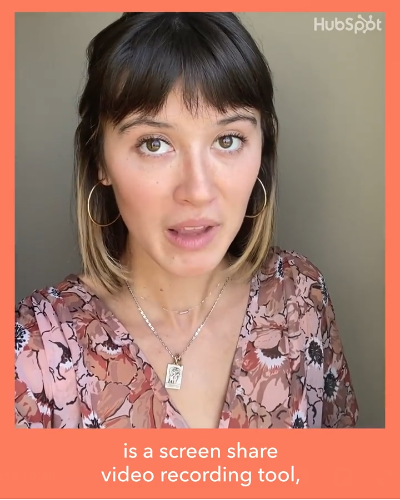Video can be expensive for businesses to produce, necessitating scripting, casting, shooting, and editing. That being said, we know that video is well worth the financial and time cost that goes into its creation.
71% of Facebook users say that they find Facebook video ads “relevant” or “highly” relevant. We also know that video ads can drive high conversion rates and are great opportunities to establish brand awareness with new, cold audiences.
The good news is that while video is important and it can be expensive, you don’t necessarily need an overwhelming number of individually-shot videos to successfully test different creatives. What you do need is a large number of video openers.
In this post, we’re going to discuss our go-to testing framework for video creative on Facebook Ads to find what works and optimize it moving forward.
Why You Need the Right Framework For Testing Video Creative
You need the right framework to test your video creative or you could wind up looking at the wrong subsets of data that won’t really tell you anything actionable. And if you’re not looking at the right data, the tests can become pointless.
In analysis we ran across 20 video ad campaigns, we found that some viewership trends remained consistent regardless of performance metrics, including the following:
– The average watch time was under five seconds, ranging 3-6 seconds.
– Approximately 25% of people watched around 5 seconds (with a range of about 16-25%).
– Viewership retention leveled off at around 5 seconds.

Even our lowest-performing video ads all saw similar viewership trends. And this lines up completely with what we know about Facebook user behavior.
According to a 2017 Facebook study, video ads in the News Feed are watched for 5.7 seconds on average (and this is likely even less on mobile). This is why any view that’s three seconds or longer counts as a video view on Facebook.
We also know that it takes users only .25 seconds of exposure to recall mobile feed activity, so those video intros are a crucial part of video campaigns.
Since the first five seconds of video is the most important, it only makes sense that testing different openers is the testing framework that you need. Not only is this much easier to execute, but it will save you money since you don’t need to shoot multiple different videos; rather, you only need to edit multiple different openers attached to a few (or even one) decent-performing videos.
How to Execute This Framework
We strongly recommend attaching different openers to an existing video that you’re already seeing success with, which is a great alternative to testing video ads that have entirely different creatives.
One approach that we’ve taken with advertisers is to test somewhere between five and ten different cold opens for any video we create for them. This is actually much easier to build out than you’d think, because you’re really only brainstorming two to five unique openings and unique headlines for the video.
Each version can then turn into its own individual opening, offering more thorough tests of the creative.
It may look like this:
– Opening visual A + Headline A
– Opening Visual B + Headline A
– Opening Visual A + Headline B
– Opening Visual B + Headline B
We’ll then take those 5-10 different variations and run them as dynamic creatives through Facebook to better understand which opening combinations work best. And then you can go from there.
By focusing on the lowest common denominator of video watchers, you’ll have the biggest impact when it comes to optimizing your ads as opposed to trying to create new videos from scratch every time.
And next time, when it comes to the next batch of creative both in existing assets and in future products, you can alter the openings to test something new based on what did or did not work in the past.
This will give you insanely actionable information that you can use moving forward to improve and optimize your campaigns.
The Three Key Video Metrics to Watch When Testing
In addition to sales data, there are three key video metrics that you want to watch while testing your video creative to assess performance. These are:
– Clicks on the ad
– Average watch time
– Video retention rates
You can easily assess the average watch times and video retention rates using the Video Performance Card in the Ads Manager, which helps you visualize the data to see milestones that people reach as they watch your video.
4 Tips to Create Great Hooks for Facebook Video Ads
Looking to write strong hooks for your Facebook video creative that will result in high-converting ad campaigns? These four tips are some of our go-to strategies:
1. Start by thinking about the user pain point. Every ad you create should take user pain points and motivating buying factors into consideration, because these are hot buttons that can get people to purchase. If you can catch their attention by addressing their problem right off the bat, that’s a great start. In the example below from Upright, they highlight the user pain point of improving your posture by showing multiple users quickly standing up straight from slouching with the associated headline to “Improve Your Posture.”
2. Jump right into the action. Don’t rely on a scenic opening screen, or a title screen with just your brand name and mood music. People will keep on scrolling and never see the great content. In the example below from The Perfect Jean, they jump right into someone stretching on their pants. It’s a visually arresting image that makes someone stop their scroll to see what’s going on.
3. Always include closed captions in every video. 85% of users watch videos on Facebook without sound, and it’s crucial for those who are deaf or hard of hearing. Closed captions take a little bit of effort but have a big payoff. While including captions can be more dynamic, even including simple closed captioning like in this example from HubSpot can help illustrate your message easily.

4. Consider telling personal stories of customers. These customers can be real clients or hired talent. If you’re able to have a customer explain why your brand, product, or service offered so much value and solved their problems, that’s a great start to your video ad. Using real people authentically like in this example from Boom! by Cindy Joseph is an easy way to establish credibility with people new to your brand.
Final Thoughts
Since video creative can be expensive to produce, we heavily recommend going in with a strong strategy for increasing your chances of creating a variety of high-converting campaigns. And this ultimately all comes down to testing a number of different video cold opens to see what works in attracting user attention, increasing viewership, and driving meaningful actions like clicks and conversions.
And if you need help putting together a high-converting video ad, we’ve got advice for that, too! You can learn more here.
Looking for assistance in creating, running, and testing high-converting video ad campaigns to scale on Facebook Ads? Get in touch with us here.

